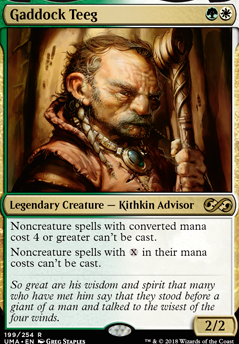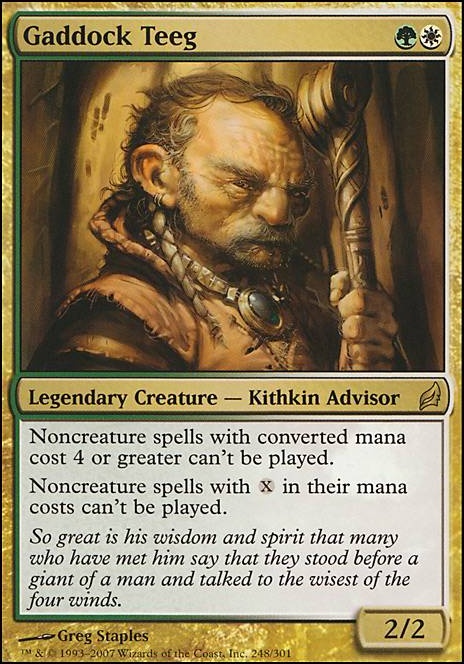Creature (42)
- 1x Alms Collector
- 1x Angel of Jubilation
- 1x Archivist of Oghma
- 1x Archon of Valor's Reach
- 1x Augur of Autumn
- 1x Aven Mindcensor
- 1x Beast Whisperer
- 1x Birds of Paradise
- 1x Collector Ouphe
- 1x Craterhoof Behemoth
- 1x Drannith Magistrate
- 1x Elesh Norn, Grand Cenobite
- 1x Elesh Norn, Mother of Machines
- 1x Esper Sentinel
- 1x Eternal Witness
- 1x Fauna Shaman
- 1x Giver of Runes
- 1x Grand Abolisher
- 1x Guardian of Faith
- 1x Linvala, Keeper of Silence
- 1x Lotus Cobra
- 1x Luminous Broodmoth
- 1x Mangara, the Diplomat
- 1x Mother of Runes
- 1x Myrel, Shield of Argive
- 1x Qasali Pridemage
- 1x Recruiter of the Guard
- 1x Rhys the Redeemed
- 1x Runic Armasaur
- 1x Sanctum Prelate
- 1x Saryth, the Viper's Fang
- 1x Scavenging Ooze
- 1x Seedborn Muse
- 1x Selfless Spirit
- 1x Shalai, Voice of Plenty
- 1x Sigarda, Host of Herons
- 1x Sun Titan
- 1x Tajuru Preserver
- 1x Vigor
- 1x Weathered Wayfarer
- 1x Yasharn, Implacable Earth
- 1x Yisan, the Wanderer Bard
Land (36)
- 1x Arid Mesa
- 1x Bountiful Promenade
- 1x Brushland
- 1x Canopy Vista
- 1x Command Tower
- 1x Exotic Orchard
-
1x
Flooded Strand

- 6x Forest
- 1x Fortified Village
- 1x Gavony Township
- 1x Mana Confluence
-
1x
Marsh Flats

- 1x Minas Tirith
- 1x Misty Rainforest
- 1x Nykthos, Shrine to Nyx
- 7x Plains
- 1x Reflecting Pool
- 1x Sunpetal Grove
- 1x Temple Garden
- 1x Temple of Plenty
- 1x Verdant Catacombs
-
1x
Windswept Heath

-
1x
Wooded Bastion

- 1x Wooded Foothills
- 1x Yavimaya Hollow
Instant (4)
Commander (1)
Enchantment (15)
- 1x Aura Shards
- 1x Aura of Silence
- 1x Authority of the Consuls
- 1x Deafening Silence
- 1x Exploration
- 1x Land Tax
- 1x Mirri's Guile
- 1x Monologue Tax
- 1x Privileged Position
- 1x Smothering Tithe
- 1x Sterling Grove
- 1x Stony Silence
- 1x Sylvan Library
- 1x Wheel of Sun and Moon
Artifact (2)
Suggestions
Updates Add
Comments
Attention! Complete Comment Tutorial! This annoying message will go away once you do!
Important! Formatting tips — Comment Tutorial — markdown syntax
Please login to comment
Casual
98% Competitive
| Date added | 2 weeks |
| Last updated | 1 week |
| Legality | This deck is Commander / EDH legal. |
| Rarity (main - side) | 13 - 0 Mythic Rares 63 - 0 Rares 9 - 0 Uncommons 2 - 0 Commons |
| Cards | 100 |
| Avg. CMC | 2.88 |
| Tokens | Copy Clone, Elf Warrior 1/1 GW, Soldier, Treasure |
| Votes | |
| Ignored suggestions | |
| Shared with | |
| Views |


